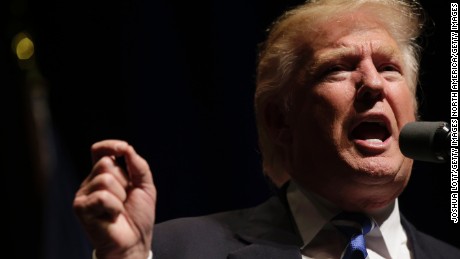
(CNN)By the end of Republican and Democratic conventions it seemed like the nation"s most powerful political parties were speaking about two different countries.
Many parts of the conventions -- the messages, choice of speakers, the host cities -- helped outline separate visions of the nation and where the candidates, Republican Donald Trump and Democrat Hillary Clinton, want to take it in the future.
Here"s a recap of some of the major differences -- and even a few similarities -- from the past two weeks.
"Stronger Together" vs. "Make America Great Again"
The thematic emphasis in these two conventions couldn"t have been further apart. While there were many light-hearted moments and warm family stories told from the stage at Trump"s convention, speakers focused heavily on challenges America faces and encouraged delegates to call for Clinton"s imprisonment. Each night, chants of "Lock her up" broke out on the convention floor. The week culminated in Trump"s speech on the fourth night, in which he portrayed the United States as something of a lawless dystopia that he "alone" could fix.
Clinton"s convention, of course, had its own burdens, and there was plenty of time spent bashing Trump. Some speakers, for example, suggested he was literally insane and Clinton herself said he was unfit to be trusted with nuclear codes. But ultimately, the message delivered in Philadelphia was one more hopeful than the week prior in Cleveland. Speakers spoke of how far the nation had come in civil rights and equality for minorities, and the convention emphasized contributions from immigrants -- including those in the nation illegally -- who were featured prominently throughout the week.
The Speakers
The Democratic convention featured an A-list line-up of top party establishment figures, including President Barack Obama, Vice President Joseph Biden, former President Bill Clinton, primary challenger Sen. Bernie Sanders, Massachusetts Sen. Elizabeth Warren and a host of prominent entertainment celebrities. The impressive list of speakers sent a clear message that the party would rally around the nominee.
In contrast, the Trump campaign struggled mightily to convince many leading Republicans to even make an appearance. John Kasich, the governor of the state hosting the convention, refused to show. Despite signing a pledge that they would support the party nominee, Trump"s other primary rivals stayed home.
Even the party"s sole living former presidents, George H.W. Bush and George W. Bush, declined to make an appearance or deliver a video message. The highest ranking Republican to speak was House Speaker Paul Ryan, but he did so with clear lingering reservations about many of Trump"s policy ideas. Left without much of the party"s top brass, Trump relied heavily on his family, granting prime speaking slots to his wife and children. Other time was filled with lesser known Republican figures who have rallied around Trump.
Former presidential candidate Ted Cruz accepted an invitation to speak, but he refused to endorse Trump onstage, a snub that led to chaos on the floor.
Views the states
The differences between the two gatherings were perhaps most fully on display during the roll call -- when the parties formally nominate the candidate state by state. Republicans and Democrats described their states very differently.
The protesters
Both host cities dealt with protesters differently.
The Republican convention was held in the center of downtown Cleveland, requiring heavy policy presence throughout to keep the peace between delegates and protesters.
Cleveland"s open-carry laws allowed people outside the convention to brandish weapons, and lots of people took advantage of it, if just to make a statement.
The Democratic convention held its main events in a barricaded complex of sports arenas far removed from central Philadelphia. The isolation largely ensured that demonstrators held a majority of protests out of site, although a few got close.
Rocky starts
Both conventions kicked off with their own controversies.
Coverage of the Republican convention took a sharp turn on Day One when it was found that Melania Trump plagiarized key passages of her speech from Michelle Obama in 2008.
Coverage of the Republican convention took a sharp turn on Day One when it was found that Melania Trump plagiarized key passages of her speech from Michelle Obama in 2008.
Democratic National Committee Chairwoman Debbie Wasserman Schultz was forced to resign before the convention began when WikiLeaks published a trove of internal party emails showing how Democrats privately moved to undercut Bernie Sanders while publicly claiming neutrality in the race.
Bernie Sanders supporters vocalized their dissatisfaction with Clinton with anti-Clinton chants, boos and protests outside the convention.
Sanders offered a full-throated endorsement of Clinton and urged supporters not to shout or protest.
Some did anyway.
The Celebrities
The star power at the Democratic convention was incomparable what Republicans were able to provide.
For the Democrats: Elizabeth Banks, Sarah Silverman, Bradley Cooper, Meryl Streep, Susan Sarandon, Katy Perry, Rosario Dawson, Lady Gaga, Lenny Kravitz and Carole King
In her speech, Clinton pushed against Trump"s view of the country, and framed the election as a "moment of reckoning."
But who got better ratings? Trump, by 2 million.
In the end, no matter the party or candidate, we"ll always have dancing to unite us.
But who got better ratings? Trump, by 2 million.
In the end, no matter the party or candidate, we"ll always have dancing to unite us.
Read more: http://www.cnn.com/2016/07/29/politics/republican-and-democratic-conventions/index.html


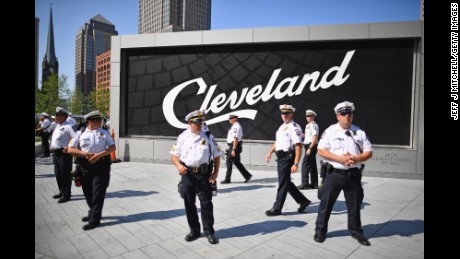

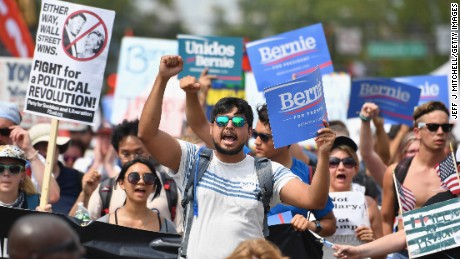


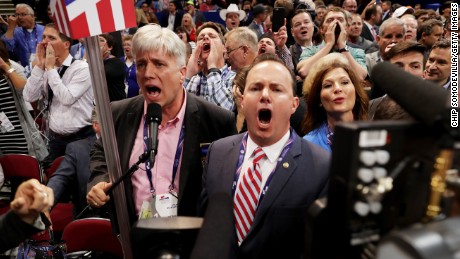

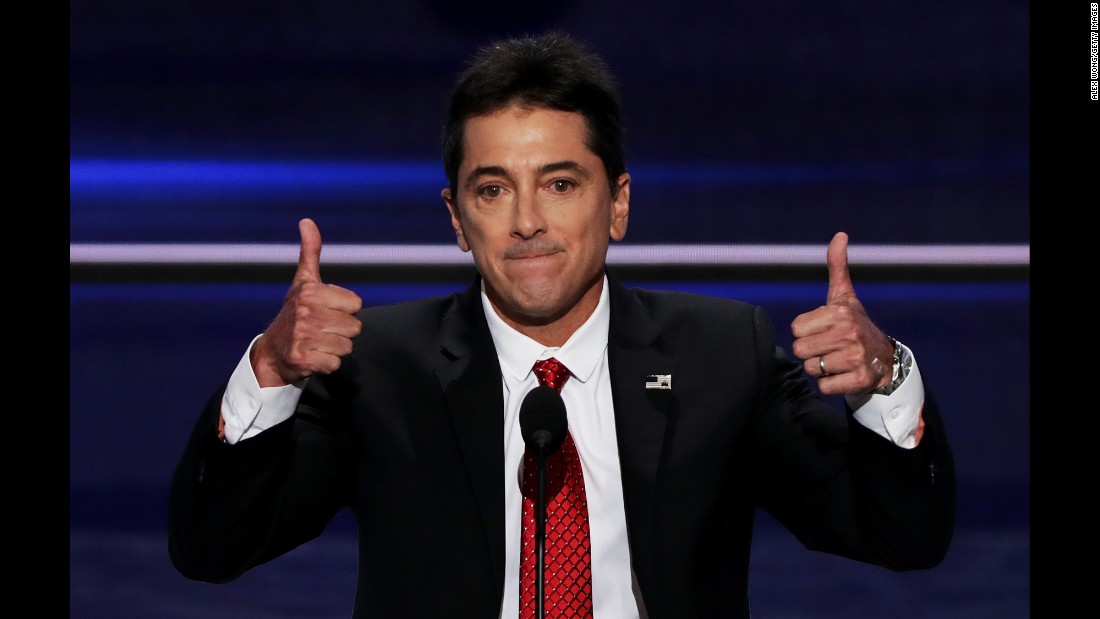


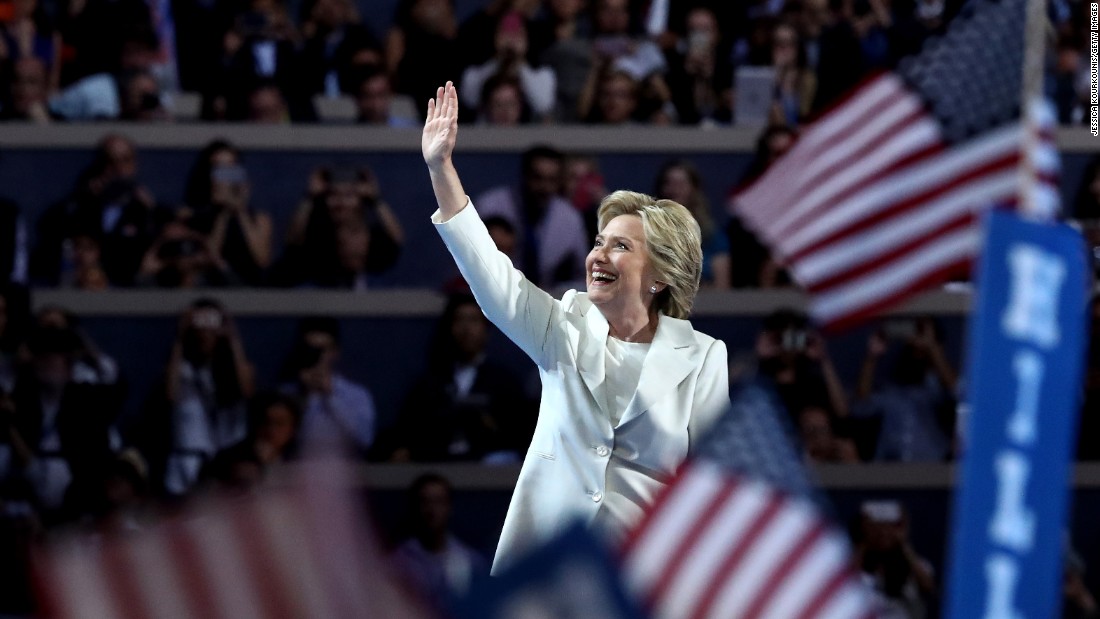

No comments:
Post a Comment